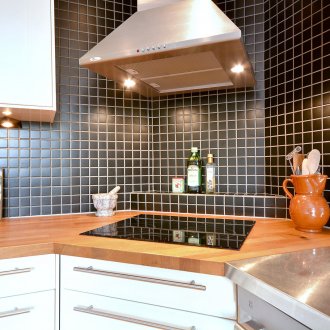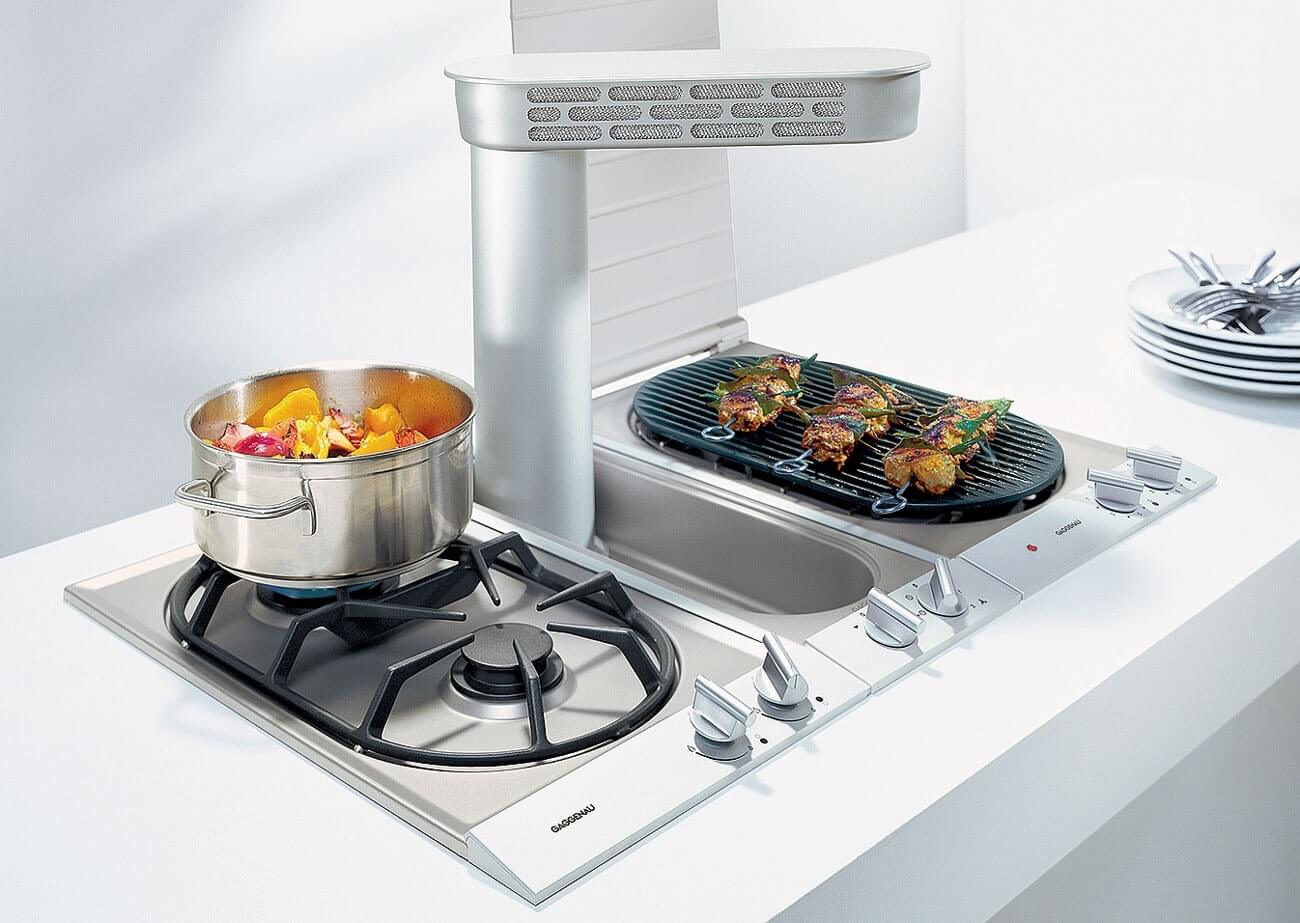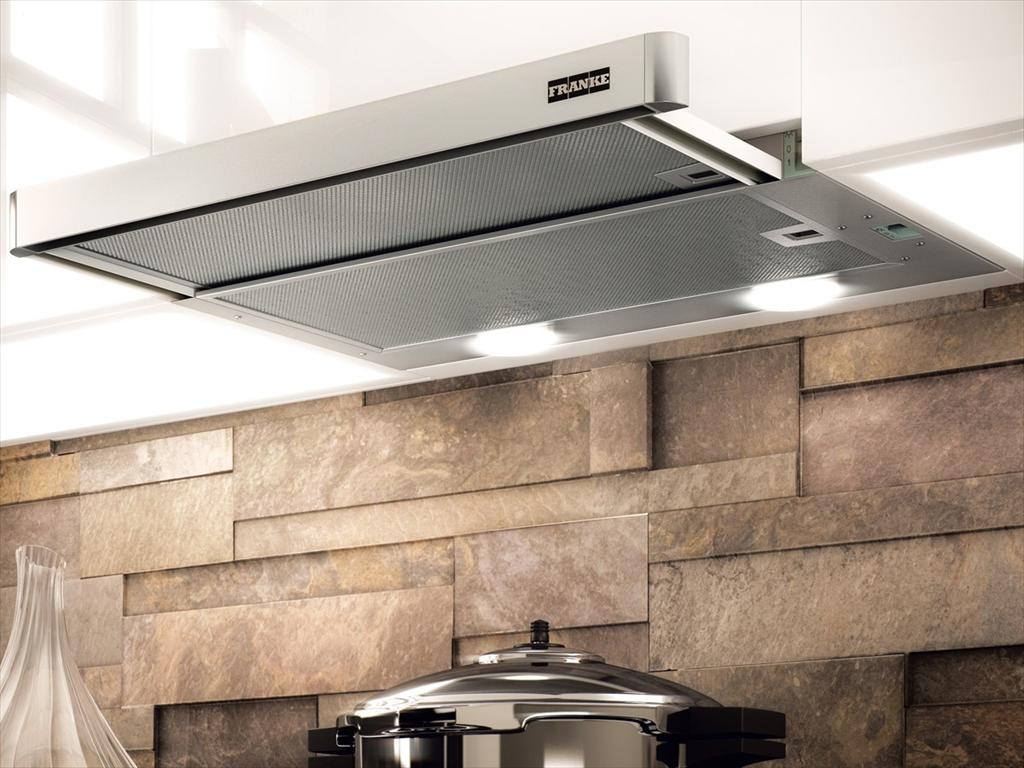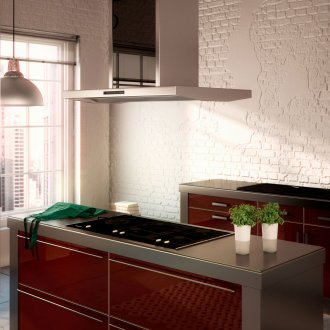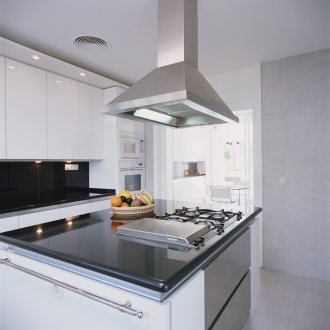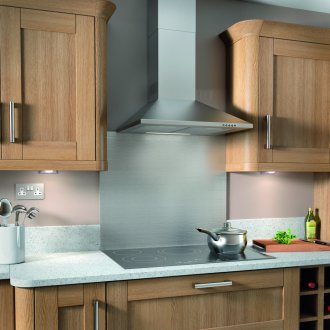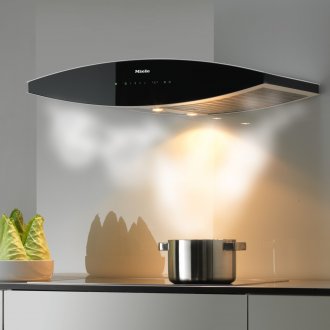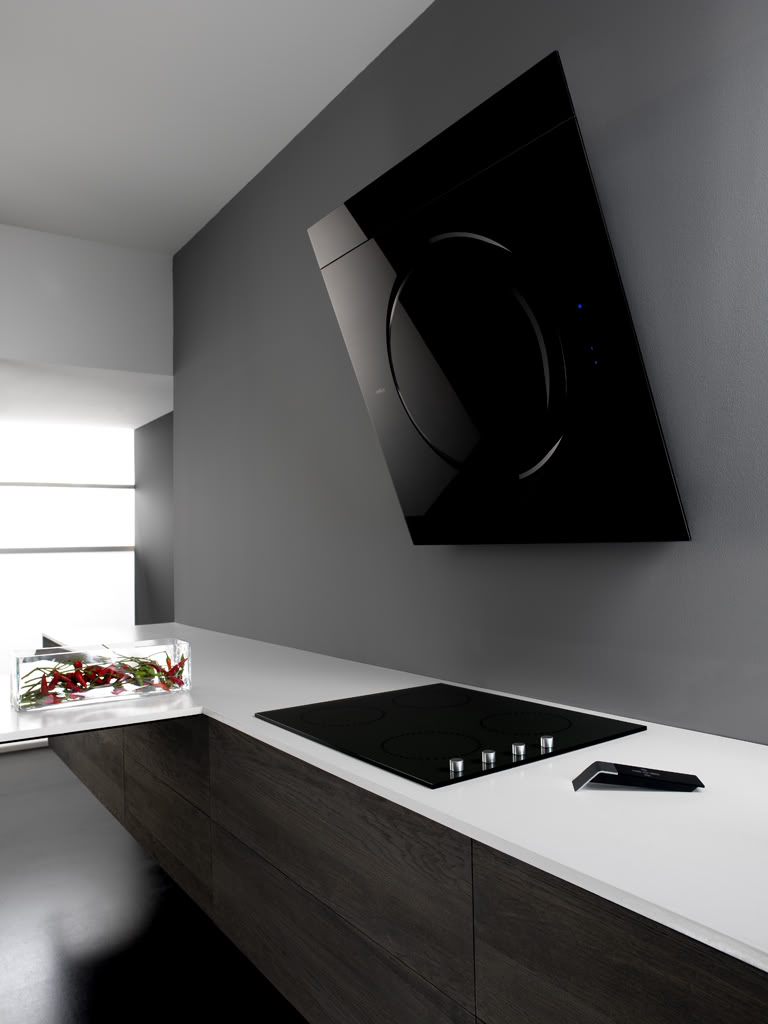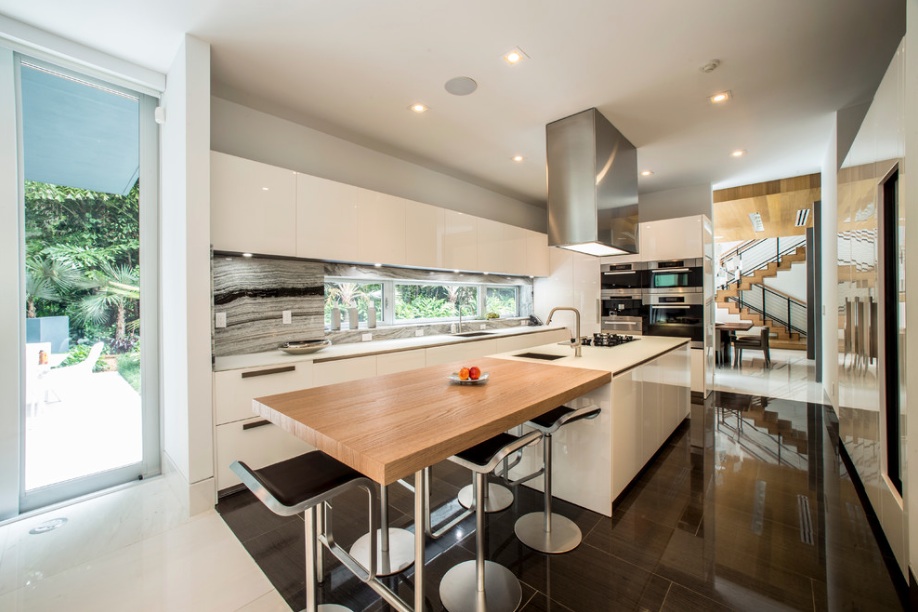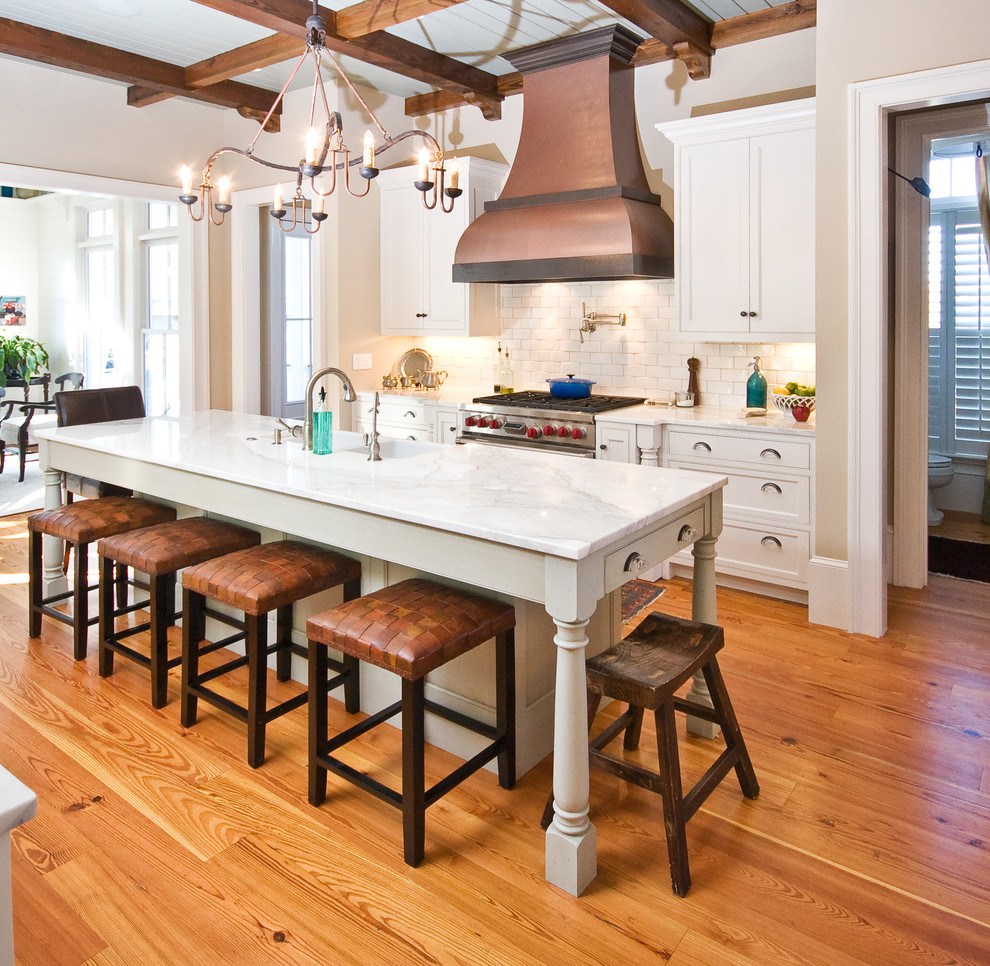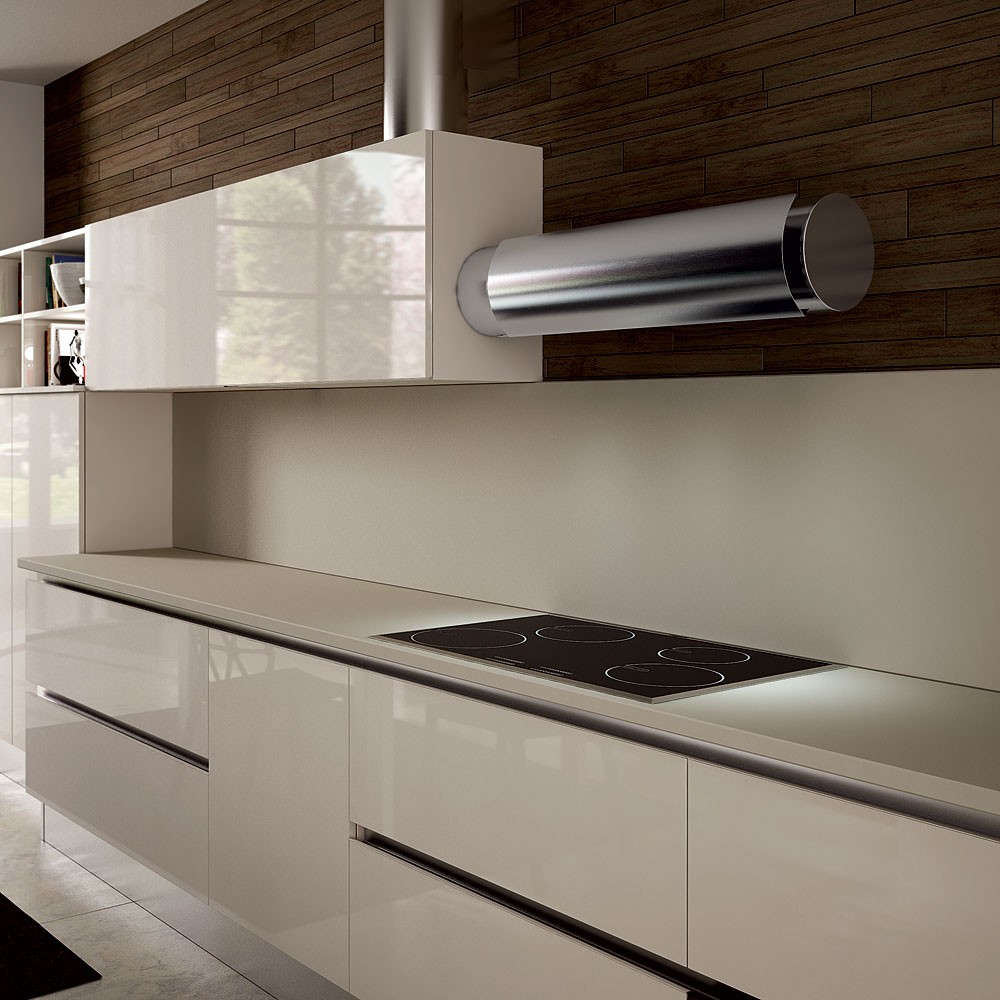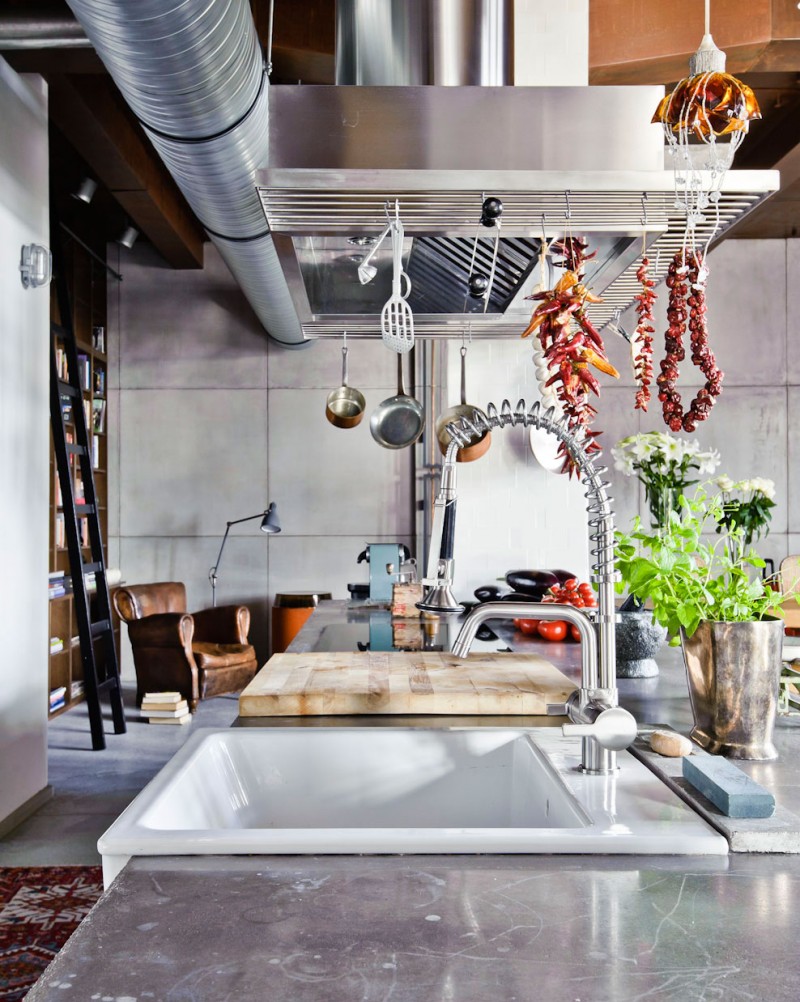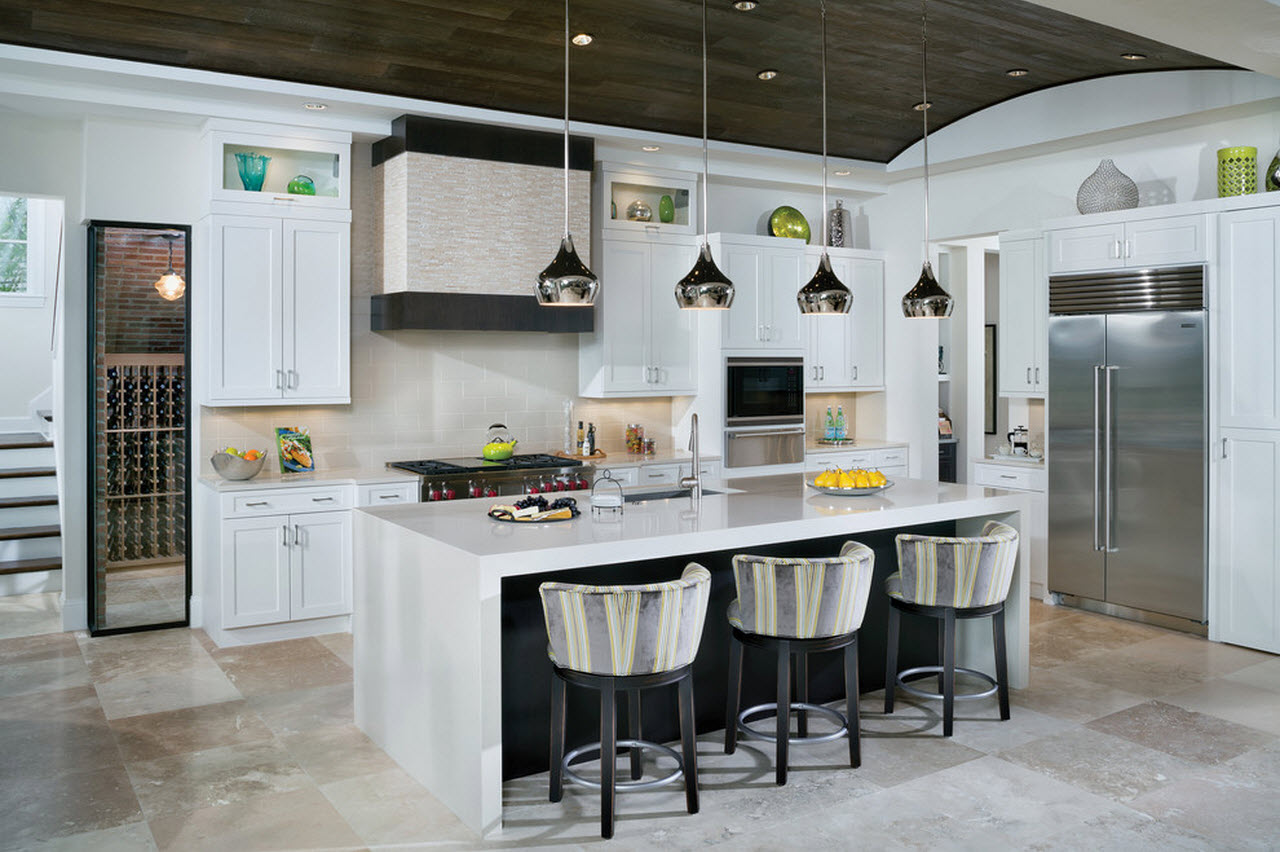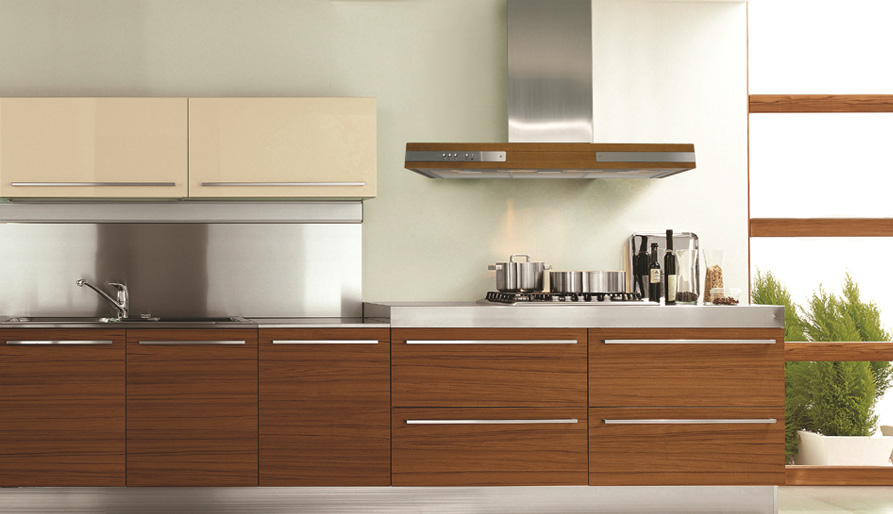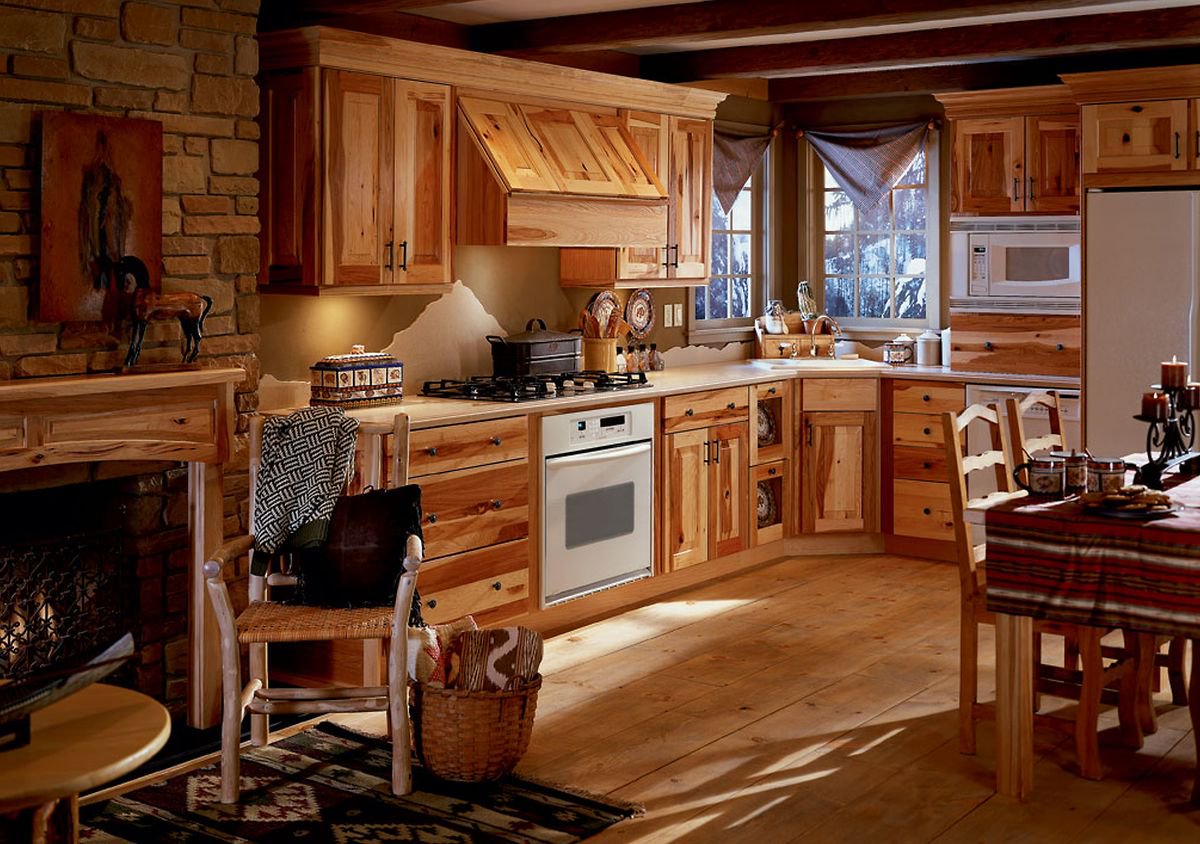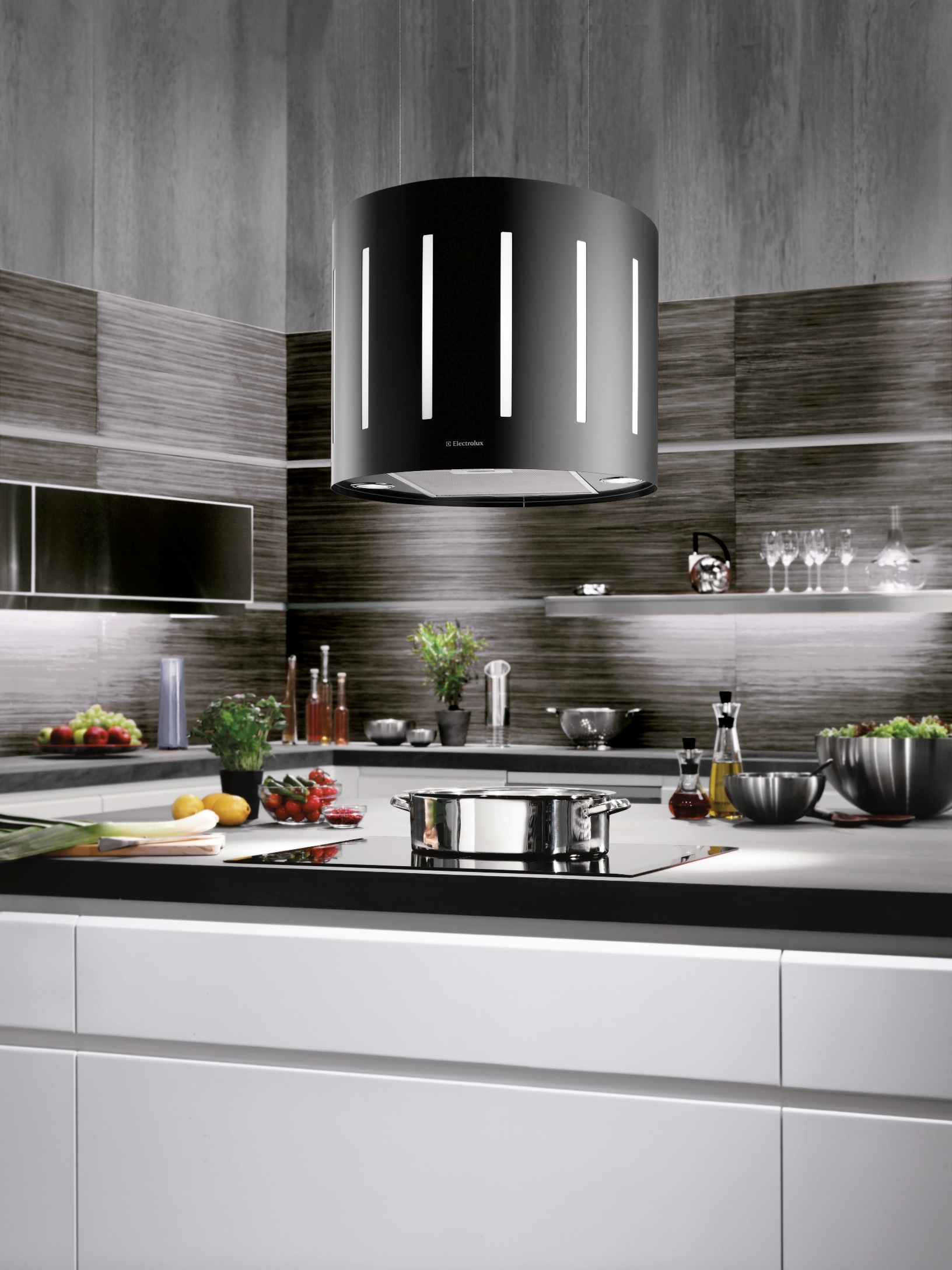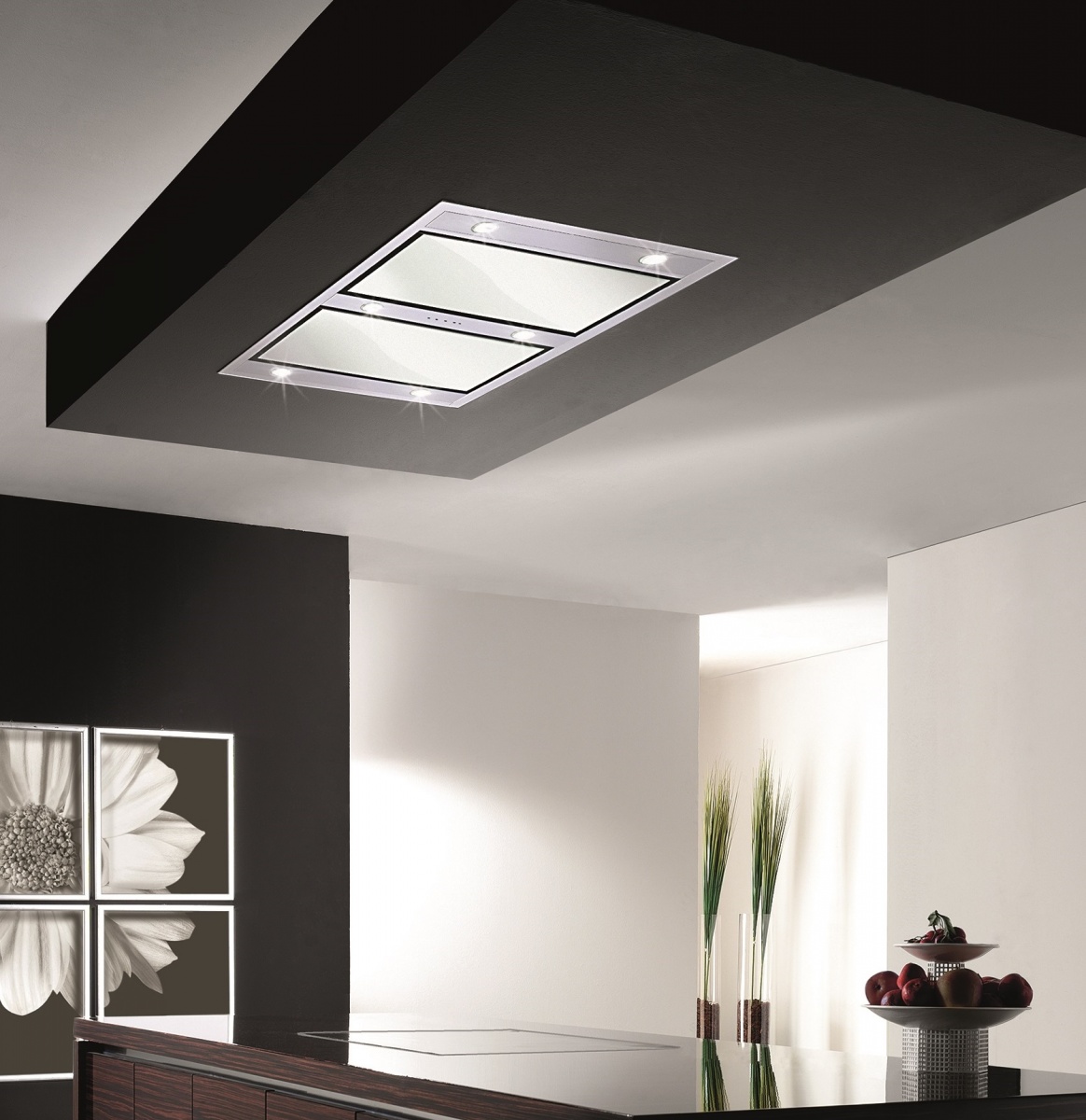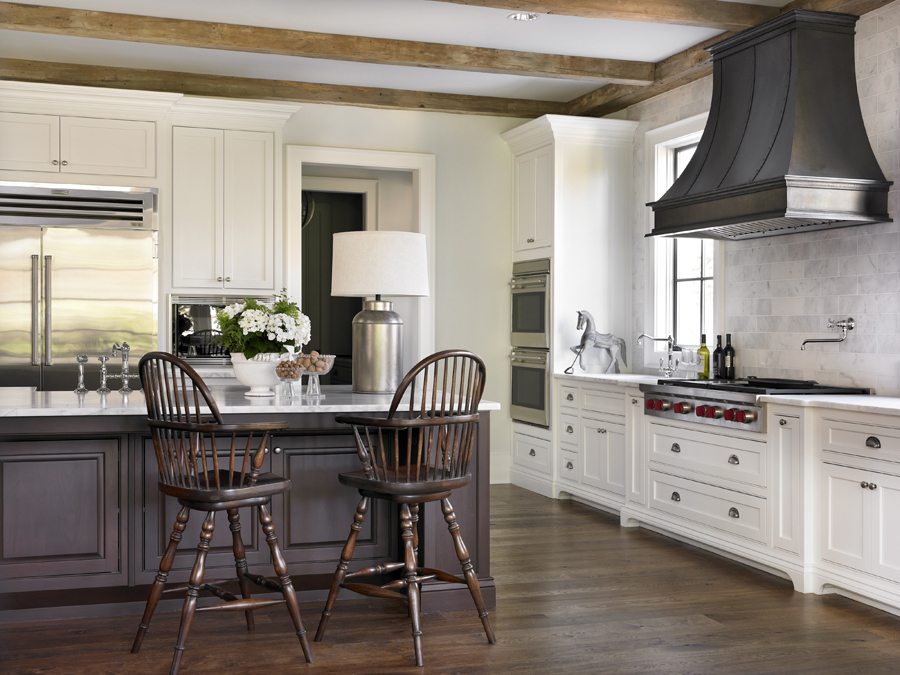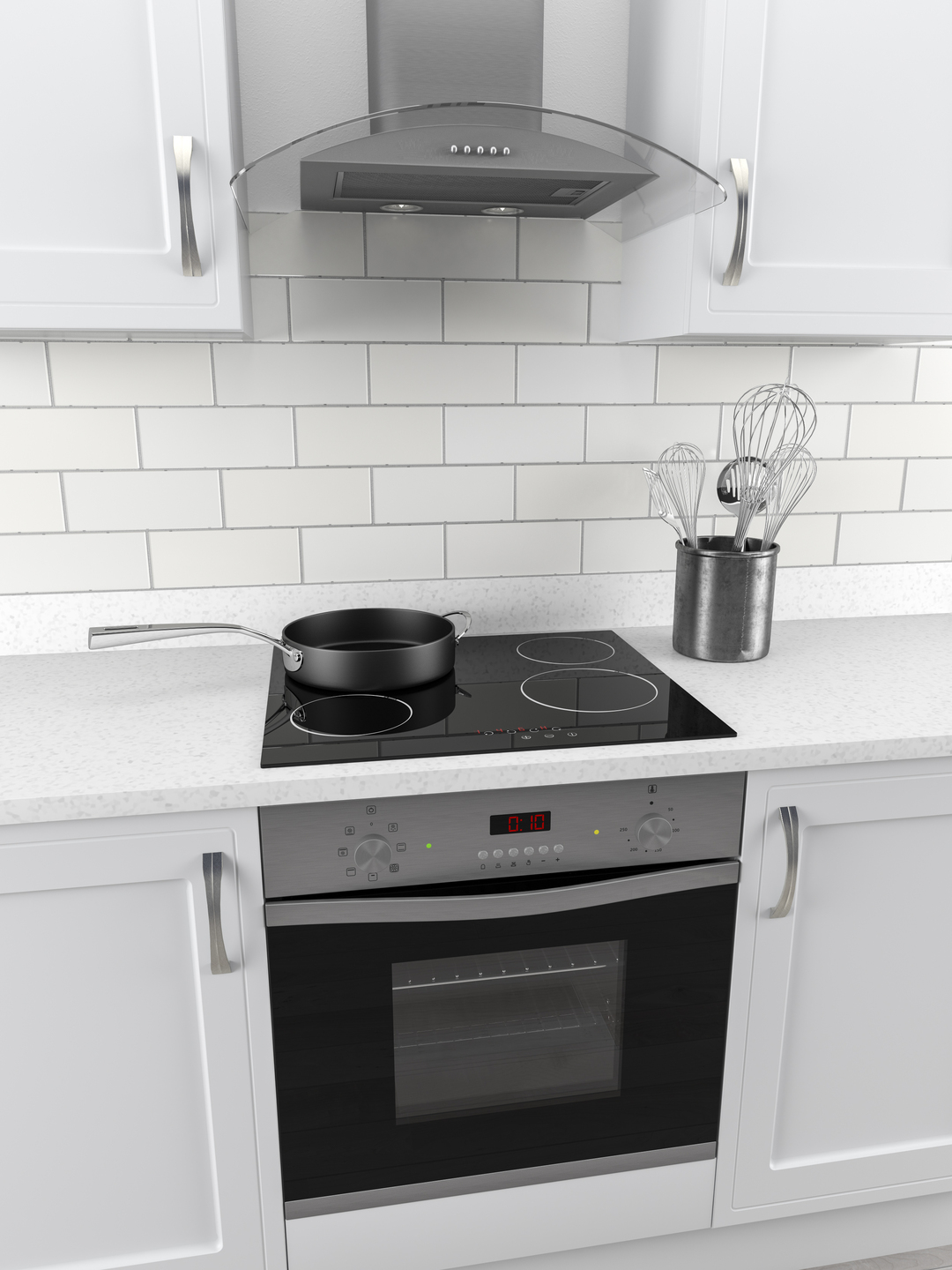Charcoal hood for the kitchen: advantages and features (26 photos)
Content
It is difficult to be in a kitchen in which a carbon hood is not installed, because during cooking, smoke and fumes are emitted, which contain, in addition to water, various aromatic and not so substances, as well as microscopic particles of fat.
In most cases, the kitchen facilities of apartment buildings have their own system of ventilation ducts built into the walls, which do not always cope with their task successfully. The effectiveness of the removal of harmful gases outside the apartment in this case depends not only on the degree of contamination of the air duct, but also on weather conditions. With a certain direction of the wind, in rain or in a snowstorm, the thrust can also become reverse.
By connecting an exhaust hood (with forced air intake or not), people often lose the only remaining ventilation hole in the kitchen. Of course, a working extractor hood perfectly removes low-quality air from the room, especially if it has a powerful built-in fan, but in this case, heat is also removed outside the apartment in winter. And if it’s summer, and does air conditioning work? This means that the more air with normal temperature will be removed from the apartment, the more hot air will enter it from the street through any slots in the windows and doors.
What happens when, for some reason, the hood is turned off? Air circulation will stop, which will lead to the accumulation of harmful substances in the room.
Exhaust without exhaust air - the best solution
Such a ventilation system as an extractor with a charcoal filter allows, without using the ventilation duct, to remove all odors and smoke that arise during cooking. At the same time, the cleaned air is not thrown out of the apartment, but returns to it, without increasing the load on either air conditioners in the summer or heating devices in the winter.
Today, coal hoods for the kitchen of various designs are produced, and the buyer only needs to decide exactly what he specifically needs.
Hoods without an air duct with carbon filters can be mounted above the stove, but there are also models built into the kitchen furniture. They can be installed in any convenient place. Due to the absence of the need to use a ventilation duct, these units can be used for air purification not only in the kitchen, but also in other rooms.
Hoods without a duct, produced today, work almost silently, which is usually very popular with housewives who spend a lot of time in the kitchen. While air purification devices connected to the air duct, on the contrary, sometimes make quite a lot of noise.
Nowadays, issues related to the design of the room are also important. The built-in hood with carbon filters gives you more opportunities to give the kitchen an exquisite style, to ensure the comfort of being in it, eliminating the need to hide the air duct from your eyes, which in many cases is a difficult task.
Hoods without an air duct that do not require air exhaust outside the kitchen for their work allow you to create a microclimate in it that is easy to breathe even without the need for constant ventilation of the room.
Varieties of filters installed in hoods
Hoods without an air duct are always equipped with two types of filters: grease and charcoal.
Today, on sale, customers are often offered a universal charcoal filter, but although it has the ability to trap the smallest particles of fat, it will have a short run time if one such charcoal filter is used for drawing, so the best choice is a filter system with the two specialized filters indicated above : coal and fat.
Grease filters
Such filters belong to coarse cleaning systems. Their main task is to delay the soot, burning and generally any small particles, thereby protecting the inner surfaces of the hood from covering them with a layer of grease and soot. They can be both disposable, simple, and reliable in service, and reusable, which are easy to clean, but require careful handling.
Disposable filters, as a rule, are made of either non-woven or acrylic, and in the manufacture of reusable grease filters, either aluminum or stainless steel is used.
Carbon filters
Hoods with a charcoal filter without air exhaust outside the kitchen are sorption devices that eliminate odors in the room by absorbing harmful gases, as well as various vapor impurities. It is absolutely impossible to clean the charcoal filter for a kitchen hood on its own, so it must be replaced with a new one no later than the dates indicated by its manufacturer.
Filters of this type are manufactured using activated carbon and additional processing with special chemical compounds that help neutralize fumes and unpleasant odors in the kitchen.
The carbon filter, as a rule, has a rounded plastic perforated casing with a special filler located inside it, containing in its pores a huge number of tiny particles of activated carbon. This component is able not only to resist odors, but also to absorb volatile organic substances that can harm the human respiratory system.
Currently, you can buy a carbon filter for any hood, it is only important to know exactly the model of the air purifier in the kitchen that you purchased.
What are the parameters to choose a carbon hood?
When choosing a hood equipped with a carbon filter, it is necessary, first of all, to know its specific type, since these units can be:
- flat;
- domed;
- combined.
The most compact are flat hoods operating in recirculation mode (that is, purified air always returns to the room). Their carbon filters are disposable, and they need to be changed periodically, so you need to think in advance where you will acquire such important replacement elements.
Domes work with air outlet from the kitchen to the street, so the presence of a carbon filter in them is required only if you do not want the neighbors to know what you are cooking.
Combined exhaust devices with carbon filters can work with and without air exhaust.
Choosing the right type of hood from the three options considered, you will already significantly reduce the list of suitable models. The next stage is the study of the main technical characteristics, of which performance is considered the most important.
It should be borne in mind that if there is an air duct in the hood, then each bend reduces the productivity declared by the manufacturer by almost 10%.
Choosing a more productive model, it is necessary to consider that in such devices engines with higher power are also used, which during operation will produce a lot of noise. The situation with a noise level not exceeding 55 decibels can be considered normal.
Important when choosing a hood is also a way to control it, which can be either push-button or more advanced - touch.In addition, it is good when the hood has a built-in backlight, especially if you are going to mark this unit directly above the hob.
There are also several options for performing backlighting. For example, to solve this problem, either LEDs or lamps can be used:
- halogen;
- fluorescent;
- incandescent.
The decisive role also belongs to the material from which the hood body is made. For cheap models, it is often made of plastic, while the case of expensive exhaust devices is made of aluminum, stainless steel, glass.
